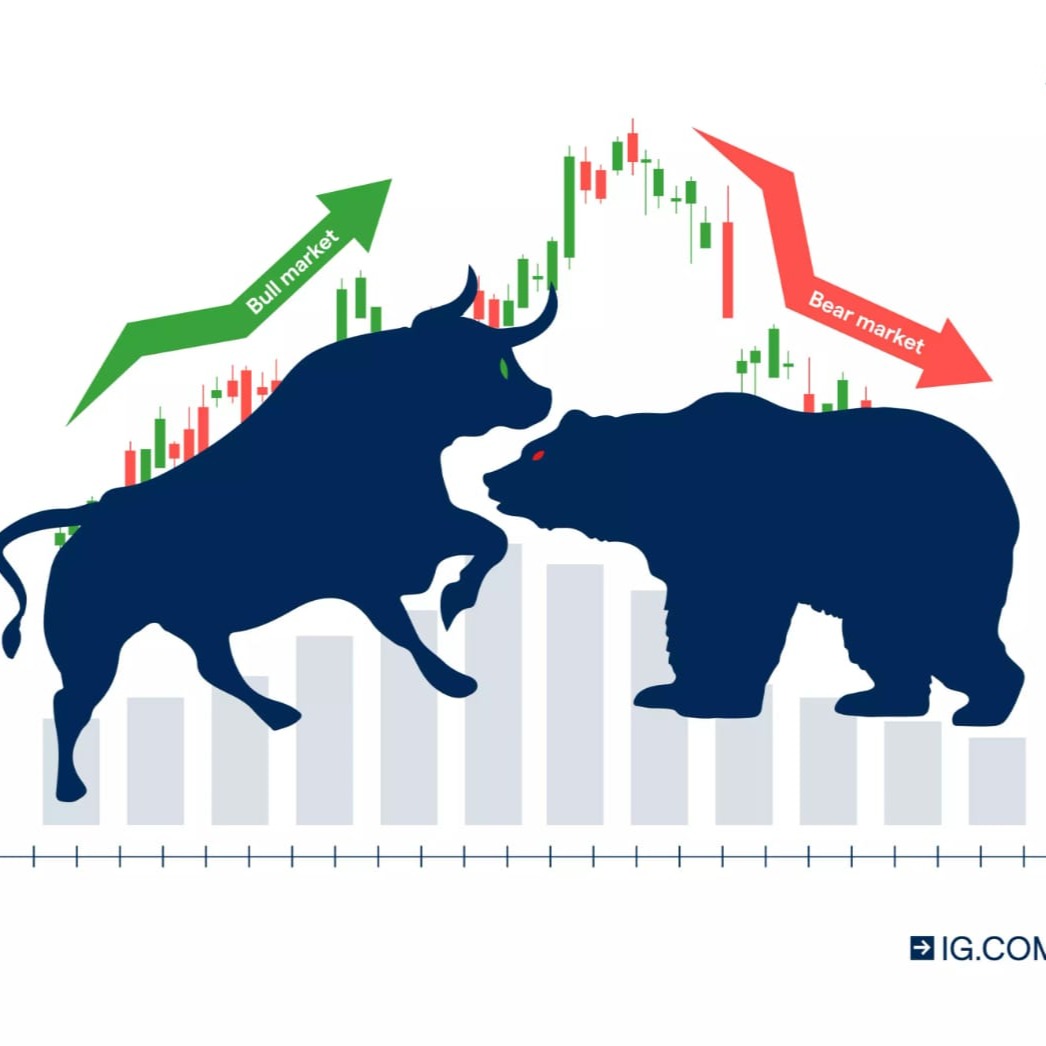
Cena DeepBook ProtocolDEEP
PLN
Notowany
zł0.2754PLN
+1.00%1D
Cena DeepBook Protocol (DEEP) w Złoty polski wynosi zł0.2754 PLN.
Wykres cen DeepBook Protocol (PLN/DEEP)
Ostatnia aktualizacja: 2025-11-02 01:27:54(UTC+0)
Konwerter DEEP na PLN
DEEP
PLN
1 DEEP = 0.2754 PLN. Bieżąca cena konwersji 1 DeepBook Protocol (DEEP) na PLN wynosi 0.2754. Stawka ta ma charakter wyłącznie informacyjny.
Bitget oferuje najniższe opłaty transakcyjne spośród wszystkich głównych platform handlowych. Im wyższy poziom VIP, tym korzystniejsze stawki.
Cena DeepBook Protocol w PLN na żywo dzisiaj
Aktualny dzisiejszy kurs DeepBook Protocol wynosi zł0.2754 PLN, a bieżąca kapitalizacja rynkowa wynosi zł1.20B. Cena DeepBook Protocol wzrosła o 1.00% w ciągu ostatnich 24 godzin, a 24-godzinny wolumen obrotu wynosi zł45.41M. Współczynnik konwersji DEEP/PLN (DeepBook Protocol na PLN) jest aktualizowany w czasie rzeczywistym.
Ile kosztuje 1 DeepBook Protocol w Złoty polski?
W tej chwili cena 1 DeepBook Protocol (DEEP) w Złoty polski wynosi zł0.2754 PLN. Możesz teraz kupić 1 DEEP za zł0.2754 lub 36.31 DEEP za zł10. W ciągu ostatnich 24 godzin najwyższa cena DEEP do PLN wynosiła zł0.2829 PLN, a najniższa cena DEEP do PLN wynosiła zł0.2740 PLN.
Czy uważasz, że cena DeepBook Protocol dziś wzrośnie czy spadnie?
Łączna liczba głosów:
Wzrost
0
Spadek
0
Dane głosowania są aktualizowane co 24 godziny. Odzwierciedlają one prognozy społeczności dotyczące trendu ceny DeepBook Protocol i nie należy ich traktować jako porady inwestycyjnej.
DeepBook Protocol – dane rynkowe
Wydajność cenowa (24 godz.)
24 godz.
Najniższ. z 24 godz.: zł0.27Najwyższ. z 24 godz.: zł0.28
Najwyższa dotychczasowa wartość (ATH):
zł1.27
Zmiana ceny (24 godz.):
+1.00%
Zmiana ceny (7 d.):
-10.78%
Zmiana ceny (1 r.):
+33.00%
Ranking rynkowy:
#139
Kapitalizacja rynkowa:
zł1,202,985,911.73
W pełni rozwodniona kapitalizacja rynkowa:
zł1,202,985,911.73
Wolumen (24h):
zł45,408,729.06
Podaż w obiegu:
4.37B DEEP
Maks. podaż:
--
Raport z analizy AI na temat DeepBook Protocol
Dzisiejsze najważniejsze wydarzenia na rynku kryptowalutWyświetl raport
Historia cen DeepBook Protocol (PLN)
Cena monety DeepBook Protocol odnotowała +33.00% w ciągu ostatniego roku. Najwyższa cena monety DEEP wyrażona w PLN w ostatnim roku wyniosła zł1.27, a najniższa cena monety DEEP wyrażona w PLN w ostatnim roku wyniosła zł0.1542.
CzasZmiana ceny (%) Najniższa cena
Najniższa cena Najwyższa cena
Najwyższa cena 
 Najniższa cena
Najniższa cena Najwyższa cena
Najwyższa cena 
24h+1.00%zł0.2740zł0.2829
7d-10.78%zł0.2624zł0.3337
30d-44.98%zł0.2252zł0.5608
90d-44.77%zł0.2252zł0.6919
1y+33.00%zł0.1542zł1.27
Cały okres+25.66%zł0.03963(2024-10-14, 1 lat temu)zł1.27(2025-01-19, 287 dni temu)
Jaka jest najwyższa cena DeepBook Protocol?
Historyczne maksimum DEEP (ATH) w: PLN wyniosło zł1.27 i zostało odnotowane 2025-01-19. W porównaniu z historycznym maksimum DeepBook Protocol, obecna cena DeepBook Protocol spadła o 78.26%.
Jaka jest najniższa cena DeepBook Protocol?
Historyczne minimum DEEP (ATL) w: PLN wyniosło zł0.03963 i zostało odnotowane 2024-10-14. W porównaniu z historycznym minimum DeepBook Protocol, obecna cena DeepBook Protocol wzrosła o 594.91%.
Prognoza ceny DeepBook Protocol
Kiedy jest dobry moment na zakup DEEP? Czy zalecane jest teraz kupno lub sprzedaż DEEP?
Podejmując decyzję o kupnie lub sprzedaży DEEP, należy najpierw rozważyć własną strategię handlową. Różnić się będzie także aktywność handlowa traderów długoterminowych i krótkoterminowych. Analiza techniczna DEEP Bitget może stanowić punkt odniesienia dla handlu.
Zgodnie z 4-godzinna analiza techniczna DEEP, sygnałem transakcyjnym jest Mocna sprzedaż.
Zgodnie z Dzienna analiza techniczna DEEP, sygnałem transakcyjnym jest Sprzedaj.
Zgodnie z Tygodniowa analiza techniczna DEEP, sygnałem transakcyjnym jest Mocna sprzedaż.
Jaka będzie cena DEEP w 2026?
W 2026, przy założeniu prognozowanego rocznego tempa wzrostu na poziomie +5%, oczekuje się, że cena DeepBook Protocol (DEEP) osiągnie zł0.2990; w oparciu o prognozowaną cenę na ten rok, skumulowany zwrot z inwestycji w przypadku zainwestowania i trzymania środków w wysokości DeepBook Protocol do końca 2026 osiągnie +5%. Więcej szczegółów można znaleźć tutaj: Prognozy ceny DeepBook Protocol na lata 2025, 2026 oraz 2030–2050.Jaka będzie cena DEEP w roku 2030?
W 2030 r., przy założeniu prognozowanego rocznego tempa wzrostu na poziomie +5%, oczekuje się, że cena DeepBook Protocol (DEEP) osiągnie zł0.3634; w oparciu o prognozowaną cenę na ten rok, skumulowany zwrot z inwestycji w przypadku zainwestowania i trzymania środków w wysokości DeepBook Protocol do końca 2030 r. osiągnie 27.63%. Więcej szczegółów można znaleźć tutaj: Prognozy ceny DeepBook Protocol na lata 2025, 2026 oraz 2030–2050.
Popularne promocje
Globalne ceny DeepBook Protocol
Jaka jest obecna wartość DeepBook Protocol w innych walutach? Ostatnia aktualizacja: 2025-11-02 01:27:54(UTC+0)
DEEP do ARS
Argentine Peso
ARS$107.22DEEP do CNYChinese Yuan
¥0.53DEEP do RUBRussian Ruble
₽6DEEP do USDUnited States Dollar
$0.07DEEP do EUREuro
€0.06DEEP do CADCanadian Dollar
C$0.1DEEP do PKRPakistani Rupee
₨21.09DEEP do SARSaudi Riyal
ر.س0.28DEEP do INRIndian Rupee
₹6.63DEEP do JPYJapanese Yen
¥11.5DEEP do GBPBritish Pound Sterling
£0.06DEEP do BRLBrazilian Real
R$0.4Jak kupić DeepBook Protocol(DEEP)

Utwórz darmowe konto Bitget
Zarejestruj się na Bitget, podając swój adres e-mail/numer telefonu komórkowego i utwórz silne hasło, aby zabezpieczyć swoje konto.

Zweryfikuj swoje konto
Zweryfikuj swoją tożsamość, wprowadzając swoje dane osobowe i przesyłając zdjęcie ważnego dokumentu tożsamości.

Konwertuj DEEP na PLN
Wybierz spośród kryptowalut do handlu na Bitget.
Często zadawane pytania
Jaka jest aktualna cena monety DeepBook Protocol?
Aktualną cenę monety DeepBook Protocol można sprawdzić na giełdzie Bitget lub innych renomowanych platformach kryptowalutowych.
Jakie czynniki wpływają na cenę DeepBook Protocol?
Czynniki wpływające na cenę DeepBook Protocol obejmują popyt rynkowy, dynamikę podaży, ogólne trendy rynkowe oraz rozwój w ekosystemie DeepBook Protocol.
Czy cena Protokół DeepBook wzrośnie w przyszłości?
Chociaż trudno jest przewidzieć przyszłe ruchy cenowe, inwestorzy często analizują trendy rynkowe i rozwój projektów w ramach Protokół DeepBook, aby podejmować świadome prognozy.
Gdzie mogę kupić DeepBook Protocol w najlepszej cenie?
Możesz kupić DeepBook Protocol po konkurencyjnych cenach na giełdzie Bitget, gdzie możesz skorzystać z różnych opcji handlowych.
Czy protokół DeepBook jest dobrą inwestycją?
Wykonalność protokołu DeepBook jako inwestycji zależy od badań indywidualnych i warunków rynkowych. Zawsze uwzględniaj swoją tolerancję na ryzyko przed inwestowaniem.
Jak cena DeepBook Protocol ma się do swojego najwyższego poziomu w historii?
Cenę DeepBook Protocol można porównać z jej najwyższym poziomem w historii, sprawdzając historyczne dane cenowe na giełdzie Bitget lub różnych platformach analizy kryptowalut.
Jakie są prognozy cen dla Protokół DeepBook na następny rok?
Prognozy cen dla Protokół DeepBook różnią się znacznie i zależą od różnych warunków rynkowych oraz analiz. Zaleca się pozostawanie na bieżąco z wiadomościami rynkowymi i analizami ekspertów.
Jak mogę śledzić trendy cenowe protokołu DeepBook?
Trendy cenowe protokołu DeepBook można śledzić za pomocą narzędzi analityki rynkowej oraz bezpośrednio na platformach takich jak Bitget Exchange.
Czy są jakieś nadchodzące wydarzenia, które mogą wpłynąć na cenę DeepBook Protocol?
Nadchodzące wydarzenia, takie jak aktualizacje technologii lub ogłoszenia o partnerstwie, mogą wpłynąć na cenę DeepBook Protocol. Obserwuj wiadomości z oficjalnych kanałów.
Jaka jest kapitalizacja rynkowa protokołu DeepBook i jak wpływa na jego cenę?
Kapitalizacja rynkowa protokołu DeepBook odzwierciedla jego całkowitą wartość rynkową, co może wpływać na postrzeganie inwestorów i dynamikę cen. Możesz znaleźć aktualne informacje o kapitalizacji rynku na Bitget Exchange.
Jaka jest obecna cena DeepBook Protocol?
Bieżąca cena monety DeepBook Protocol wynosi zł0.28 za (DEEP/PLN), przy czym bieżąca kapitalizacja rynkowa wynosi zł1,202,985,911.73 PLN. Wartość monety DeepBook Protocol podlega częstym wahaniom, ponieważ rynek kryptowalut jest aktywny przez całą dobę. Bieżąca cena monety DeepBook Protocol w czasie rzeczywistym i jej dane historyczne są dostępne na Bitget.
Czym jest 24-godzinny wolumen obrotu DeepBook Protocol?
W ciągu ostatnich 24 godzin wolumen obrotu DeepBook Protocol wyniósł zł45.41M.
Jaka jest najwyższa dotychczasowa wartość DeepBook Protocol?
Najwyższa dotychczasowy cena DeepBook Protocol to zł1.27. Ta najwyższa dotychczasowa cena jest najwyższą ceną dla DeepBook Protocol od czasu jego wprowadzenia.
Czy mogę kupić DeepBook Protocol na Bitget?
Tak, DeepBook Protocol jest obecnie dostępne na scentralizowanej giełdzie Bitget. Aby uzyskać bardziej szczegółowe instrukcje, zapoznaj się z naszym pomocnym przewodnikiem Jak kupić deepbook-protocol .
Czy mogę uzyskać stały dochód z inwestycji w DeepBook Protocol?
Oczywiście Bitget zapewnia platforma do handlu strategicznego, z inteligentnymi botami handlowymi do automatyzacji transakcji i osiągania zysków.
Gdzie mogę kupić DeepBook Protocol z najniższą opłatą?
Z przyjemnością informujemy, że platforma do handlu strategicznego jest już dostępny na giełdzie Bitget. Bitget oferuje wiodące w branży opłaty transakcyjne i głębokość, aby zapewnić inwestorom zyskowne inwestycje.
Ceny powiązanych kryptowalut
Cena Bitcoin (PLN)Cena Litecoin (PLN)Cena WINkLink (PLN)Cena Solana (PLN)Cena Stellar (PLN)Cena XRP (PLN)Cena OFFICIAL TRUMP (PLN)Cena Ethereum (PLN)Cena Worldcoin (PLN)Cena dogwifhat (PLN)Cena Kaspa (PLN)Cena Smooth Love Potion (PLN)Cena Terra (PLN)Cena Shiba Inu (PLN)Cena Dogecoin (PLN)Cena Pepe (PLN)Cena Cardano (PLN)Cena Bonk (PLN)Cena Toncoin (PLN)Cena Pi (PLN)
Gdzie mogę kupić DeepBook Protocol (DEEP)?
Sekcja wideo — szybka weryfikacja, szybki handel

Jak ukończyć weryfikację tożsamości na Bitget i zabezpieczyć się przed oszustwami?
1. Zaloguj się na swoje konto Bitget.
2. Jeśli jesteś nowym użytkownikiem Bitget, obejrzyj nasz przewodnik poświęcony tworzeniu konta.
3. Najedź kursorem na ikonę swojego profilu, kliknij opcję „Nie zweryfikowano” i wybierz „Zweryfikuj”.
4. Wybierz kraj lub region wydający dokument tożsamości oraz jego rodzaj, a następnie postępuj zgodnie z instrukcjami.
5. Wybierz opcję „Weryfikacja mobilna” lub „PC” w zależności od preferencji.
6. Podaj swoje dane, prześlij kopię dokumentu tożsamości i zrób selfie.
7. Prześlij swoje zgłoszenie i gotowe — weryfikacja tożsamości zakończona.
Kup DeepBook Protocol za 1 PLN
Pakiet powitalny o wartości 6200 USDT dla nowych użytkowników Bitget!
Kup DeepBook Protocol teraz
Inwestycje w kryptowaluty, w tym kupowanie DeepBook Protocol online za pośrednictwem Bitget, podlegają ryzyku rynkowemu. Bitget zapewnia łatwe i wygodne sposoby kupowania DeepBook Protocol. Dokładamy wszelkich starań, aby w pełni informować naszych użytkowników o każdej kryptowalucie, którą oferujemy na giełdzie. Nie ponosimy jednak odpowiedzialności za skutki, które mogą wyniknąć z kupna DeepBook Protocol. Ta strona i wszelkie zawarte w niej informacje nie stanowią poparcia dla żadnej konkretnej kryptowaluty.
Konwerter DEEP na PLN
DEEP
PLN
1 DEEP = 0.2754 PLN. Bieżąca cena konwersji 1 DeepBook Protocol (DEEP) na PLN wynosi 0.2754. Stawka ta ma charakter wyłącznie informacyjny.
Bitget oferuje najniższe opłaty transakcyjne spośród wszystkich głównych platform handlowych. Im wyższy poziom VIP, tym korzystniejsze stawki.
DEEP – źródła
Oceny DeepBook Protocol
4.4
Tagi:
Kontrakty:
--
Bitget Insights

BGUSER-SNXYLE69
2025/10/02 04:50
friends
$DEEP its my opinion 1$ and 10$ 😜 so what's ur opinion ? comment now 0.12
DEEP-1.58%

ScalpingX
2025/09/29 08:33
$DEEP - Mcap 426,44M$ - 88%/ 43,4K votes Bullish
SC02 M5 - pending Long order. Entry is within HVN + not affected by any weak zone, estimated stop-loss around 1.47%. The uptrend is in the 199th cycle, advance amplitude 11.85%.
#TradingSetup #CryptoInsights
DEEP-1.58%

Jahanzaib_Gondal
2025/09/18 04:25
$ZKC: Game Time. Analyzing the New $ZKC Power on Bitget.
Subtitle: The buzzer beater has sounded. $ZKC the native token for the elite zkSync ecosystem, is now live for trading on Bitget. We break down the pre-game analysis and the potential plays ahead.
Let's get straight to the scouting report.
The Player: Who is $ZKC?
$ZKC isn't just another name on the roster. It's the utility token for zkSync Era, a top-tier Layer-2 blockchain using advanced zero-knowledge (ZK) proofs to scale Ethereum. Think of it as the fuel and the franchise player for a faster, cheaper Ethereum experience.
· Position: Utility Token / Ecosystem Driver
· Key Stats: Powers network security, pays gas fees via account abstraction, and governs the future of the zkSync protocol.
· Draft Position: Highly touted prospect with a strong technical foundation.
The Market: First Quarter Analysis
The opening minutes of a new listing are all about volatility and momentum. $ZKC is hitting the court with a few key advantages:
· Strong Bench (Ecosystem): zkSync isn't a rookie. It has a deep bench of DeFi apps, NFTs, and users already playing on its network. This isn't a build-from-scratch project.
· Crowd Hype (Demand): Launching on a major exchange like Bitget provides instant liquidity and access to a global audience of traders. Expect a high-volume opening.
· The Game Plan (Tokenomics): The token is designed to be used, not just held. Real utility creates real demand.
Key Resistance Level (The Defense to Break): $0.95 - $1.05 This is the first major test.A strong breakout above this zone on high volume could signal a run-up.
Key Support Level (The Home-Court Advantage): $0.65 - $0.75 This is the floor.Holding this level is critical for maintaining bullish momentum. A break below could see a retreat to find stronger support.
The Playbook: Price Prediction Scenarios
This is not financial advice. This is a game plan based on market mechanics.
· Bull Case (The Championship Run): If Bitcoin holds strong and the altcoin market rallies, $ZKC's unique narrative could make it a standout performer.
Short-term target: $1.50 - $2.00. This would require sustained buying pressure and overall market greed.
· Base Case (A Solid Season): The most likely scenario is consolidation after the initial listing frenzy. Price action chops between $0.80 and $1.20 as the market digests the initial supply and demand. This is healthy for long-term growth.
· Bear Case (An Off Night): If the broader crypto market sells off, all new listings are vulnerable. A break below key support could see a test of $0.50 or lower. This is a risk every trader must account for.
Final Buzzer: How to Play It
1. Watch the Volume: High volume on green candles = strong buying interest. Low volume on pumps = a potential fakeout.
2. Track BTC: If Bitcoin tanks, it's hard for any altcoin, especially a new one, to rally. Know the macro climate.
3. Manage Your Risk: This is a new, volatile asset. Size your position accordingly. Don't go all-in on the first play.
$ZKC is now live. The game is on.
BTC-0.01%
FUEL-1.25%

YASIRALICTRADER🌟
2025/09/18 03:13
📊🔥 BTC Exchange Reserves Drop to Multi-Year Lows: What It Means for Price Action
The Bitcoin market has just hit a critical milestone: exchange reserves are now at multi-year lows. This development is more than just a data point—it’s a powerful signal of shifting market dynamics, investor sentiment, and long-term price potential. For traders, institutions, and retail holders alike, this trend could reshape how Bitcoin behaves in the months ahead. Let’s dive deep into what this means. 🚀
---
✨ 📉 BTC Exchange Reserves Explained
What are Exchange Reserves?
Exchange reserves represent the total amount of Bitcoin held in wallets controlled by centralized exchanges.
Why it Matters?
When reserves drop, it typically means fewer coins are available for immediate selling, suggesting that investors are moving their BTC to cold storage for long-term holding.
---
🚀 🐂 Supply Shock in the Making?
With fewer coins on exchanges, liquidity shrinks.
A shrinking supply often leads to a supply-demand imbalance, which can trigger sharp upward movements in price when demand increases.
This pattern has historically aligned with bullish rallies, particularly when reserves hit extreme lows.
---
📊 On-Chain Data Insights
Multi-year lows in reserves reflect a trend similar to pre-bull market phases in previous cycles.
Large holders (whales) are accumulating and moving BTC to cold wallets.
Institutional-grade custodianship is on the rise, indicating growing long-term confidence.
---
⚡ Key Investor Takeaways
📉 Less BTC available to sell → Lower selling pressure.
📈 Higher probability of price appreciation as demand meets reduced supply.
🐋 Whale accumulation signals smart money positioning for the next leg up.
---
🌍 Broader Market Implications
A decline in reserves could reduce volatility in the short term, as panic selling becomes harder with fewer coins on exchanges.
Long-term, it may amplify bullish momentum if mainstream demand surges—especially with ETFs and institutional inflows accelerating.
This aligns perfectly with the “digital gold” narrative as more investors treat Bitcoin as a long-term store of value rather than a trading asset.
---
🔮 Outlook: What’s Next for BTC?
If exchange reserves continue falling, expect higher resistance to downside pressure.
Potential catalysts like ETF inflows, Fed policy shifts, and global liquidity trends could magnify the impact of low reserves.
The stage may be set for another historic BTC rally, with scarcity as the fuel and institutional adoption as the spark.
---
✅ Final Thoughts
The drop in BTC exchange reserves is not just a technical metric—it’s a macro signal. Investors are pulling Bitcoin off exchanges because they believe in its long-term potential. As reserves decline, the supply squeeze narrative strengthens, setting Bitcoin up for possible explosive price movements in the near future.
👉 In short: Low reserves = strong hands = bullish signal. 🐂🔥
---
BTC-0.01%
FUEL-1.25%

BGUSER-VSKY448K
2025/09/18 01:41
$SPON another deep dumpbin
DEEP-1.58%
Ceny nowo notowanych monet na Bitget








